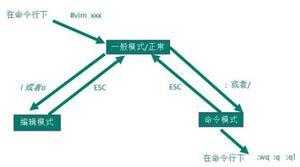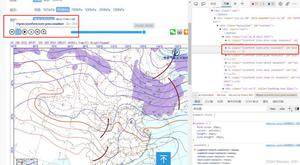python之django母板页面

其实就是利用{% block xxx %} {% endblock %}的方式定义一个块,相当于占位。存放在某个html中,比如base.html
然后在需要实现这些块的文件中,使用继承{% extends "base.html" %}的方式引入母板文件,然后在{% block xxx %}......{% endblock %}块定义中实现具体的内容。
base.html示例:注意块的定义。
<!DOCTYPE html><html lang="zh-CN">
<head>
<meta charset="utf-8">
<meta http-equiv="X-UA-Compatible" content="IE=edge">
<meta name="viewport" content="width=device-width, initial-scale=1">
<!-- 上述3个meta标签*必须*放在最前面,任何其他内容都*必须*跟随其后! -->
<meta name="description" content="">
<meta name="author" content="">
<link rel="icon" href="http://v3.bootcss.com/favicon.ico">
<link rel="stylesheet" href="https://cdn.bootcss.com/font-awesome/4.7.0/css/font-awesome.css">
<title>所有的书都在这里</title>
{% block page_css %}
{% endblock %}
{% block page_js %}
{% endblock %}
<!-- Bootstrap core CSS -->
<link href="https://cdn.bootcss.com/bootstrap/3.3.7/css/bootstrap.min.css" rel="stylesheet">
<!-- IE10 viewport hack for Surface/desktop Windows 8 bug -->
<link href="http://v3.bootcss.com/assets/css/ie10-viewport-bug-workaround.css" rel="stylesheet">
<!-- Custom styles for this template -->
<link href="http://v3.bootcss.com/examples/dashboard/dashboard.css" rel="stylesheet">
<!-- Just for debugging purposes. Don't actually copy these 2 lines! -->
<!--[if lt IE 9]><script src="http://v3.bootcss.com/assets/js/ie8-responsive-file-warning.js"></script><![endif]-->
<script src="http://v3.bootcss.com/assets/js/ie-emulation-modes-warning.js"></script>
<!-- HTML5 shim and Respond.js for IE8 support of HTML5 elements and media queries -->
<!--[if lt IE 9]>
<script src="https://cdn.bootcss.com/html5shiv/3.7.3/html5shiv.min.js"></script>
<script src="https://cdn.bootcss.com/respond.js/1.4.2/respond.min.js"></script>
<![endif]-->
</head>
<body>
{% include "nav.html" %}
<div class="container-fluid">
<div class="row">
<div class="col-sm-3 col-md-2 sidebar">
<ul class="nav nav-sidebar">
<li class="{% block book_class %}{% endblock %}"><a href="/book_list/">所有的书 <span class="sr-only">(current)</span></a>
</li>
<li class="{% block publisher_class %}{% endblock %}"><a href="/publisher_list/">出版社</a></li>
<li class="{% block author_class %}{% endblock %}"><a href="/author_list/">作者</a></li>
</ul>
</div>
<div class="col-sm-9 col-sm-offset-3 col-md-10 col-md-offset-2 main">
{% block main_body %}
{#这里是每个页面不同的部分#}
{% endblock %}
</div>
</div>
</div>
<!-- Bootstrap core JavaScript
================================================== -->
<!-- Placed at the end of the document so the pages load faster -->
<script src="https://cdn.bootcss.com/jquery/1.12.4/jquery.min.js"></script>
<script>window.jQuery || document.write('<script src="http://v3.bootcss.com/assets/js/vendor/jquery.min.js"><\/script>')</script>
<script src="https://cdn.bootcss.com/bootstrap/3.3.7/js/bootstrap.min.js"></script>
<!-- Just to make our placeholder images work. Don't actually copy the next line! -->
<script src="http://v3.bootcss.com/assets/js/vendor/holder.min.js"></script>
<!-- IE10 viewport hack for Surface/desktop Windows 8 bug -->
<script src="http://v3.bootcss.com/assets/js/ie10-viewport-bug-workaround.js"></script>
</body>
</html>
某个继承页:
{# 继承母板 #}{% extends 'base.html' %}
{% block book_class %}
active
{% endblock %}
{% block page_css %}
{% load static %}
<link rel="stylesheet" href="{% get_static_prefix %}book_list_only.css">
{% endblock %}
{#把自己页面的内容,填入母板里面相应的位置#}
{% block main_body %}
<div class="panel panel-primary">
<div class="panel-heading">
<h3 class="panel-title">我是自定义内容,用来替换母板中指定的位置</h3>
</div>
<div class="panel-body">
<div class="row">
<div class="col-md-8"> </div>
<div class="col-md-4"><a href="/add_book/" class="btn btn-primary"><i class="fa fa-plus-square"></i> 添加新书</a>
<a href="/add_publisher/" class="btn btn-success"><i class="fa fa-plus-square"></i> 添加出版社</a></div>
</div>
<table class="table table-dark table-hover">
<thead>
<tr>
<th>#</th>
<th>id</th>
<th>名称</th>
<th>出版社</th>
<th>操作</th>
</tr>
</thead>
<tbody>
{% for b in books %}
<tr>
<td>{{ forloop.counter }}</td>
<td>{{ b.id }}</td>
<td>{{ b.title }}</td>
<td>{{ b.publisher.name }}</td>
<td>
<a href="/del_book/?id={{ b.id }}" class="btn btn-danger"><i class="fa fa-trash fa-fw"></i>删除</a>
<a href="/edit_book/?id={{ b.id }}" class="btn btn-info"><i class="fa fa-pencil fa-fw"></i>编辑</a>
</td>
</tr>
{% endfor %}
</tbody>
</table>
</div>
</div>
{% endblock %}
另一个继承页:
{% extends "base.html" %}{% block main_body %}
<div class="panel panel-primary">
<div class="panel-heading">
<h3 class="panel-title">所有的出版社</h3>
</div>
<div class="panel-body">
<div class="row">
<div class="col-md-8"> </div>
<div class="col-md-4"><a href="/add_book/" class="btn btn-primary"><i class="fa fa-plus-circle fa-fw"></i>添加新书</a>
<a href="/add_publisher/" class="btn btn-success"><i class="fa fa-plus-circle fa-fw"></i>添加出版社</a></div>
</div>
<table class="table table-dark table-hover">
<thead>
<tr>
<th>#</th>
<th>id</th>
<th>名称</th>
<th>地址</th>
<th>操作</th>
</tr>
</thead>
<tbody>
{% for p in publisher %}
<tr>
<td>{{ forloop.counter }}</td>
<td>{{ p.id }}</td>
<td>{{ p.name }}</td>
<td>{{ p.addr }}</td>
<td>
<a href="/del_publisher/?id={{ p.id }}" class="btn btn-danger"><i class="fa fa-remove fa-fw"></i>删除</a>
<a href="/edit_publisher/?id={{ p.id }}" class="btn btn-info"><i class="fa fa-edit fa-fw"></i>编辑</a>
</td>
</tr>
{% endfor %}
</tbody>
</table>
</div>
</div>
{% endblock %}
{% block publisher_class %}
active
{% endblock %}
完整的练习项目代码。
1. 母版和继承
1. 什么时候用母版?
html页面有重复的代码,把它们提取出来放到一个单独的html文件。
(比如:导航条和左侧菜单)
2. 子页面如何使用母版?
{% extends 'base.html' %} --> 必须要放在子页面的第一行
母版里面定义block(块),子页面使用block(块)去替换母版中同名的块
2. 组件
1. 什么时候用组件?
重复的代码,包装成一个独立的小html文件。
2. 如何使用?
{% include 'nav.html' %}
3. Django模板语言中关于静态文件路径的灵活写法
1. 利用Django模板语言内置的static方法帮我拼接静态文件的路径
{% load static %}
<link href="{% static 'bootstrap/css/bootstrap.min.css' %}" rel="stylesheet">
2. 利用内置的get_static_prefix获取静态文件路径的别名,我们自行拼接路径
{% load static %}
<link href="{% get_static_prefix %}bootstrap/css/bootstrap.min.css" rel=stylesheet>
3. as语法(一个路径多次用到,可以使用as保存到一个变量,后面就直接使用变量代替具体路径)
4. 自定义的simple_tag
比filter高级一点点
它可以接受的参数个数大于2
5. 自定义的inclusion_tag
用来返回一段html代码(示例:返回ul标签)
1. 定义阶段
在app下面新建templatetags 文件夹(注意是Python包)
新建一个py文件
from django import template
# 生成注册示例,名字必须是register
register = template.Library()
@register.inclusion_tag("ul.html")
def show_ul(num):
num = 1 if num < 1 else int(num)
data = ["第{:0>3}个数字".format(i) for i in range(1, num+1)]
return {"data": data}
2. 调用阶段
{% load xx %}
{% show_ul 10 %}
以上是 python之django母板页面 的全部内容, 来源链接: utcz.com/z/387059.html







